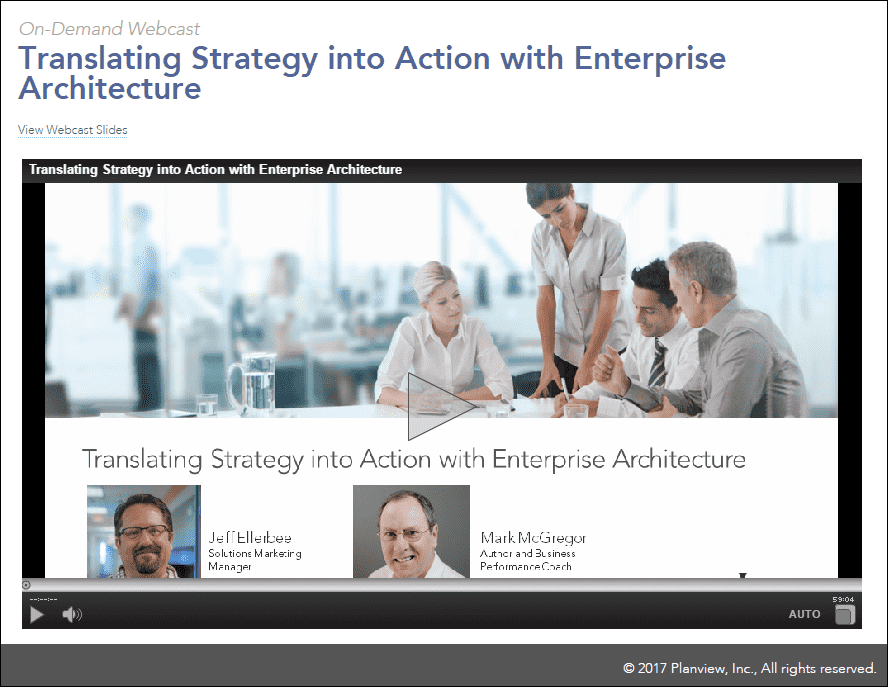
Are you ready to close the gap between Enterprise Architecture (EA) and Project and Portfolio Management (PPM)? Or the gap between strategy and execution, to finally end those turf wars? Enterprise architects should work closely with their PPM colleagues to ensure the right projects are selected and scheduled, while PPM groups can help ensure enterprise architects deliver and realize the required business outcomes. However, to be more effective both groups must step up by taking a more enterprise perspective. Historically both disciplines suffer from being too project-centric and thus are undervalued by management.
In a recent interview and webcast Translating Strategy into Action with EA Mark McGregor, author and former Gartner analyst and I, discuss the ideal connection points between Enterprise Architecture and the PMO.
Here are some questions and answers from the conversation:
Mark: There are many software vendors… How can these different groups work together when they use different tools? What is the commonality Planview sees in this area?
Jeff: We think a solution built on integrated products is key. We recognize there are different roles, but we need a solution that works for both EAs and PPMs. This means different functionality for different roles. We must first find a common data model so objects and entities can be integrated to get everyone speaking the same language. Also, an integrated user experience is important so it has the same seamless look-and-feel – whether you’re the EA or the PPM.
Mark: EA has always been focused on architecture for architects, how do you support and engage with the PPM team?
Jeff: The change is slow. We’re not seeing all EAs and PPMs working hand-in-hand, but it is changing. Our customers are maturing and driving us there. We recognize there is a gap and an opportunity for EA to fill it. You must take a portfolio-centric approach since modeling every technology change cannot scale. Inevitably, this becomes a data-driven, not model-driven approach.
Mark: If there is data sharing between EAs and PPMs, how do we avoid the scenario of the same information being changed simultaneously and going out of date?
Jeff: It is an integration challenge that can be resolved with a central repository where everything is stored. Planview allows customers to plug in their own modeling tools through a standard interface. We can ensure there is not a problem of conflicting information if all information is stored in the central repository. Making everything role-based with roles being distinct and separate is another way of avoiding conflicts and/or managing them.
Mark: In terms of delivery on strategy, what is Planview’s take on supporting innovation and collaboration in the crossover disciplines?
Jeff: Often, EAs do not have the tools they need, even though they wind up driving a virtual team anyway. With ProjectPlace inside our EA solution, they get document sharing, version control, and notifications. ProjectPlace helps our customers with Kanban boards, workspaces on the fly, and natural integration to our Troux solution. For EA tools, we think supporting innovation means providing a way for EAs to be inclusive so they can welcome input from their partners and other stakeholders. We offer Ideation and Voice of the Customer to drive the input so information can be gathered, voted up or down, and then the best ideas can create qualified demand.
I invite you to watch the on-demand replay to get more answers related to this topic including reporting and decision making, return on investment, and benefits associated with bridging the gaps in your EA-PPM relationships.

![Establishing an Enterprise Architecture-to-Business Communication Framework [Infographic]](https://blog.planview.com/wp-content/uploads/2017/11/Establishing-an-Enterprise-Architecture-to-Business-Communication-Framework-Infographic_750x400.jpg)



